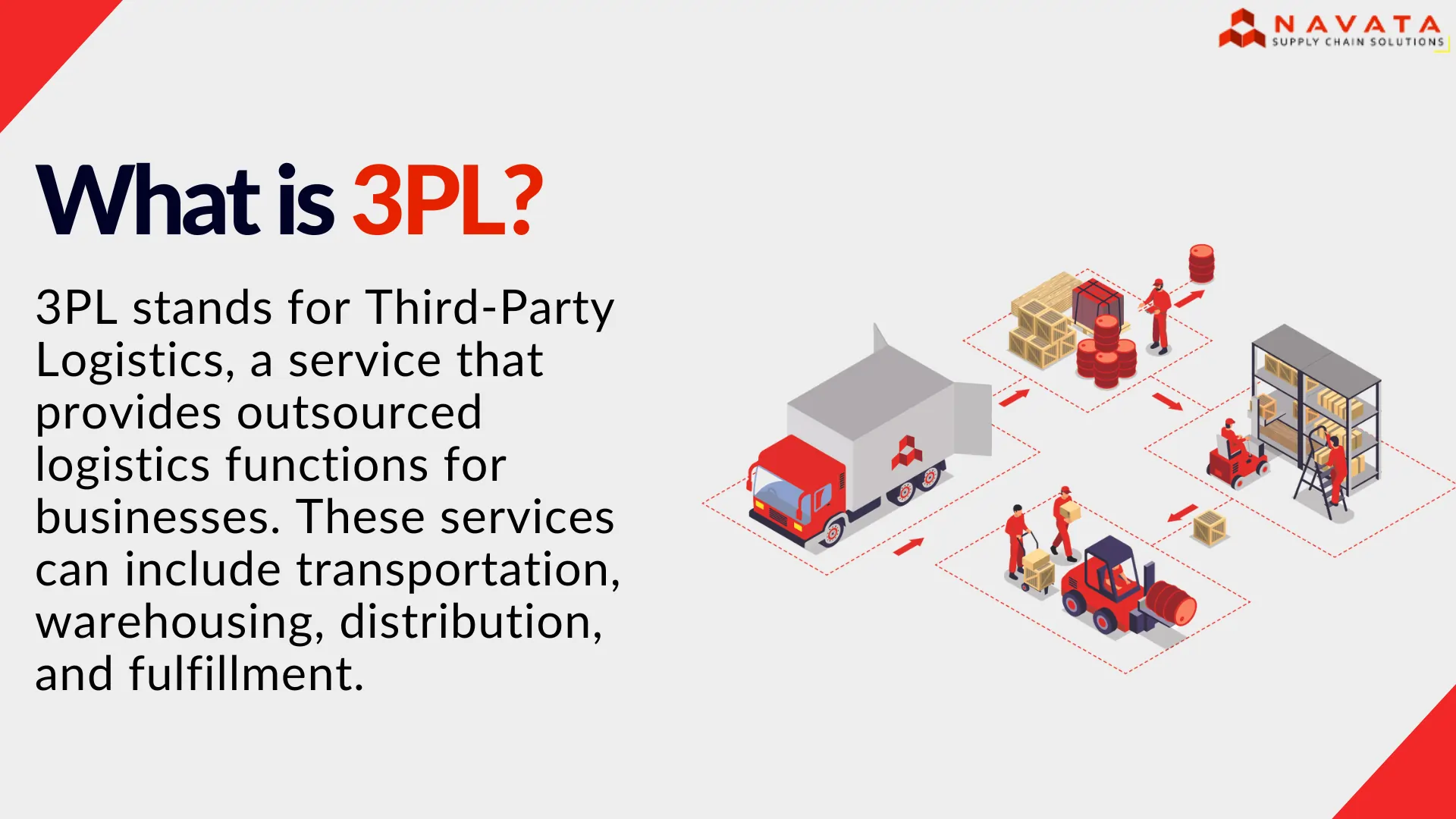3PL 4PL & 5PL
In the dynamic world of logistics, the evolution of supply chain management has led to the emergence of various models aimed at optimizing efficiency, reducing costs, and enhancing customer satisfaction.
The terms 3PL, 4PL, and 5PL describe increasing levels of outsourcing and complexity in supply chain management. A 3PL (Third-Party Logistics) provider handles specific logistics functions like warehousing, transportation, or fulfillment. A 4PL (Fourth-Party Logistics) acts as a strategic manager, overseeing the entire supply chain process including the work of 3PLs. They provide broader oversight, planning, and optimization using their expertise and resources. 5PL (Fifth-Party Logistics) takes it further by focusing on the entire supply chain network. They use advanced technologies like big data and AI to optimize efficiency, reduce costs on a wider scale, and are especially valuable in e-commerce environments where complex interconnected supply chains are the norm.
In this blog post, we’ll break down what these terms, how they’re different, and why they’re important for getting your products out into the world.
3PL (Third Party Logistics)
Third Party Logistics, commonly referred to as 3PL, is a logistics model where a company outsources its logistics operations to a specialized logistics provider. These providers offer a range of services, including transportation, warehousing, inventory management, order fulfillment, and freight forwarding. By leveraging the expertise and resources of 3PL providers, companies can focus on their core competencies while leaving the complexities of logistics to the experts.
Key Features of 3PL
Asset-Based Focus: Third Party Logistics providers typically own and operate their own infrastructure, including warehouses, transportation fleets, and technology systems. This hands-on ownership allows for direct control over the physical aspects of the supply chain, providing a degree of reliability and predictability for their clients.
Specialization: Many 3PLs specialize in specific areas of logistics. Some might excel at warehousing and inventory management, while others focus on transportation, freight forwarding, or last-mile delivery. This specialization lets companies choose 3PL partners that perfectly match their needs, creating customized solutions rather than a one-size-fits-all approach.
Tactical Execution: 3PLs are primarily concerned with the day-to-day execution of logistical tasks. They handle the receiving, storage, picking, packing, and shipping of products. Their goal is to ensure smooth and efficient operations within their area of responsibility, optimizing processes to reduce costs and improve delivery times.
Scalability: Partnering with a 3PL can give businesses flexibility to grow or adjust their operations quickly. 3PLs can accommodate changes in order volume, offer access to additional warehouse space, or provide transportation solutions as businesses expand into new markets. This scalability avoids the need for companies to invest in their own infrastructure, keeping costs down during growth periods.
Cost Savings: While there are costs associated with outsourcing to a 3PL, companies often save money in the long run. 3PLs, through economies of scale and expertise, can operate warehouses, negotiate shipping rates, and manage logistical processes more cost-effectively than companies could do on their own

4PL (Forth Party Logistics)
Forth Party Logistics, or 4PL, takes the concept of outsourcing one step further by introducing an additional layer of management and coordination. In a 4PL arrangement, the Forth Party Logistics provider serves as a single point of contact responsible for managing and optimizing the entire supply chain network on behalf of the client. This includes overseeing multiple 3PLs and other service providers to ensure seamless coordination and integration of logistics activities.
Key Features of 4PL
Strategic Oversight: 4PLs don’t physically move your goods; instead, they act as managers and consultants focused on optimizing your entire supply chain. They analyze data, identify inefficiencies, and suggest solutions to streamline processes for maximum cost savings and reliability.
Asset-Light Model: Unlike 3PLs, 4PLs tend not to own warehouses or trucks. Their value lies in their expertise and ability to orchestrate a network of service providers, allowing them to remain nimble and adaptable to a company’s needs.
Network Design and Optimization: 4PLs excel at designing and continuously improving supply chains. They analyze factors like warehouse locations, transportation routes, carrier selection, and technology integration to create the most efficient and cost-effective system. This big-picture view helps businesses cut unnecessary expenses and identify potential bottlenecks.
Data Analytics: 4PLs heavily rely on data to make informed decisions. They collect and analyze information on shipping times, inventory levels, costs, and market trends. This data-driven approach allows them to uncover hidden opportunities for improvement and provide actionable recommendations, helping businesses make strategic long-term decisions.
Collaboration and Relationship Management: A key function of 4PLs is to manage the relationships between companies and their various supply chain partners. They may negotiate contracts with 3PLs, coordinate communication and information sharing, and resolve disputes that may arise. This ensures everyone is working in sync toward common goals.

5PL (Fifth Party Logistics)
Fifth Party Logistics, also known as 5PL, represents the next frontier in logistics outsourcing. While still a relatively new concept, 5PL extends the scope of logistics management beyond traditional boundaries by incorporating advanced technologies such as artificial intelligence, big data analytics, and blockchain. Fifth Party Logistics provider leverages these technologies to offer predictive and prescriptive insights, enabling proactive decision-making and continuous optimization of the supply chain.
Key Features of 5PL
Technology-Driven Focus: 5PLs are at the forefront of technological innovation within logistics. They utilize cutting-edge solutions like big data analytics, artificial intelligence (AI), machine learning, blockchain, and the Internet of Things (IoT) to optimize supply chains in ways that weren’t possible before.
E-commerce Specialization: 5PLs thrive in the complex world of e-commerce logistics. They manage global supply chains, predict demand fluctuations, ensure fast and efficient last-mile delivery, and handle the complexities of returns management, which are critical for customer satisfaction in the e-commerce space.
Network Aggregation: 5PLs serve as logistics aggregators, connecting businesses with a wide network of 3PL providers and technology solutions. They find the best combination of services to create customized, adaptable supply chains that can respond to ever-evolving market conditions
Real-time Visibility and Control: 5PLs use advanced software platforms to provide real-time tracking and monitoring of shipments across the entire supply chain. This visibility allows businesses to make proactive decisions, mitigate disruptions, and ensure on-time delivery.
Sustainability Focus: 5PLs often incorporate sustainability initiatives into supply chain design. They use data to optimize routes for reduced carbon emissions, explore alternative fuels, and implement eco-friendly packaging solutions driving a positive environmental impact.

Conclusion
In conclusion, the evolution of logistics from 3PL to 4PL and now 5PL reflects the growing complexity and demands of modern supply chains. While each model offers its unique advantages and capabilities, they all share a common goal of enhancing efficiency, reducing costs, and improving customer satisfaction. As technology continues to advance and new challenges emerge, the logistics industry will undoubtedly evolve further, shaping the future of supply chain management. Whether it’s through 3PL, 4PL, or 5PL, businesses must embrace innovation and collaboration to stay ahead in today’s competitive marketplace.
Thanks For Reading: Understanding 3PL 4PL & 5PL
Powered By 360Presence


6 Comments
Sangeetha P
Good info. Neatly articulated.
logitrac360
Great article — really clarifies how 3PL, 4PL and 5PL differ and why each level matters. At LogiTrac360 we help logistics providers and MSMEs capture real-time visibility and automation across these models so the transition to higher-tier services becomes seamless.